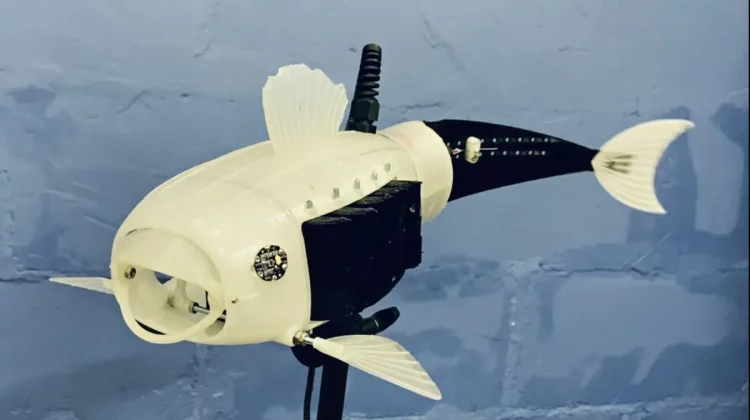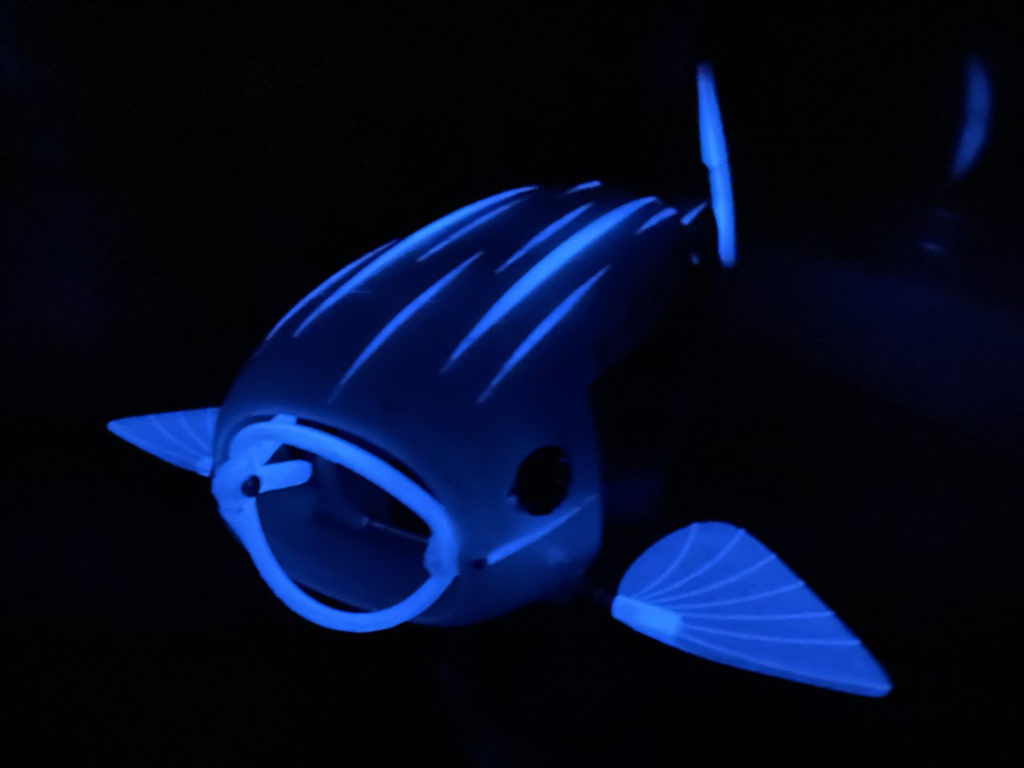
A University of Surrey academic has turned a competition-winning concept for a robot fish that filters microplastics into a working prototype.
The robot fish design was entered into the Natural Robotics Contest by Eleanor Mackintosh, a chemistry undergraduate student studying, coincidentally, at the University of Surrey. The competition, which ran in the summer of 2022, was open to anyone who had an idea for a bio-inspired robot that was able to carry out tasks that would benefit the world, with the promise that the winner would be turned into a working prototype. The contest received ideas – which ranged from forest-protecting bear robots to crab-inspired space rovers and even a robotic sea urchin – from around the globe.The winner was chosen by an international panel of experts.
‘Water pollution, especially plastic pollution, is a huge problem,’ Mackintosh told New Atlas. ‘It’s not just the ocean that suffers, but rivers, streams, lakes and ponds. This makes it a problem without a one-size-fits-all solution. My design was focused on having a versatility in its function. What better creature to address the issues in water bodies than one that lives in them?
‘Fish are adapted to their environment and gills are an incredible mechanism in nature that are specialised to filter oxygen into the bloodstream – so I adapted my design from that, with the purpose of creating a filter for microplastics instead,’ she continued.
The robot fish, which is about the size of a salmon, flaps its tail to move through the water, its open mouth funnelling water into an internal cavity. When the cavity is full of water, the robot closes its mouth, opens its gill flaps and raises the floor of the cavity, forcing the water out through the flaps, which are covered with a fine mesh that filters out plastic particles as small as two millimetres across.
Currently relying on a hardwired remote control, the robot also features an inertial measuring unit for tracking its movements in the water, and inbuilt sensors that assess turbidity and underwater light levels. It even glows in the dark. And anyone with a 3D printer can make their own – the design of the prototype is open source and is free to download on the contest website.

‘We don’t know where the vast majority of plastic dumped into our waterways ends up,’ said Robert Siddall, a lecturer at the University of Surrey and the contest’s creator. ‘We hope that this robo-fish and its future descendants are the first steps in the right direction to helping us to find and, eventually, control this plastic pollution problem. The robo-fish will join other pollution-fighting robots under development at the University of Surrey, helping to make the world more sustainable.’
The Natural Robotics Contest will return next year. Further details, along with the designs of the protype, can be found here.



